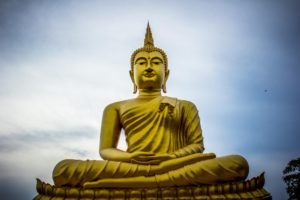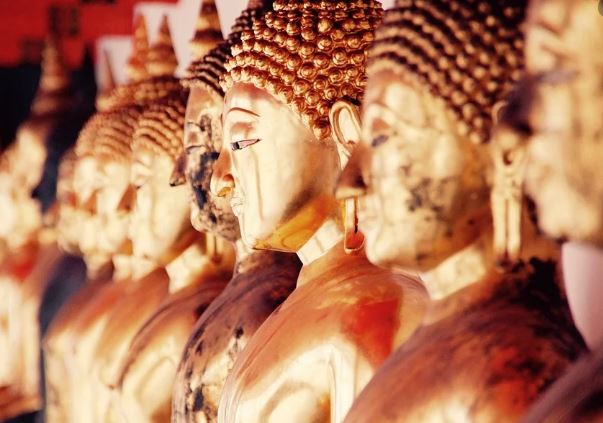The cause of suffering was explained by the Buddha as the Second Noble Truth. The Four Noble Truths form the basis of Buddhism and are one of the main concepts taught by the Buddha, together with the idea of the Eightfold Path.
The First Noble Truth is that life is suffering.
The Second Noble Truth is that suffering is caused by desire.
The Third Noble Truth is that suffering can be overcome by the cessation of desire (nibbana or nirvana).
The Fourth Noble Truth is that the way to end suffering is the Eightfold Path.
Understanding the Noble Truths
First Noble Truth
In the First Noble Truth the Buddha explained that all life is suffering (dukkha): life is full of pain, illness, aging and eventually death. Suffering does not mean just physical pain or disease but also psychological conditions; disappointments, anguish, anger, fear, loneliness. Even if your life is good, just one look around you shows that much of the world suffers from war, hunger, poverty and violence. Suffering continues through several lifetimes as human beings are born over and over again.
Second Noble Truth
The Second Noble Truth is that suffering has a cause, and that cause is desire (craving). It is the human condition to constantly want something, to crave for things or to desire for things to be something that they are not. If happiness depends on getting what you want, whether it is material or whether it is love or attention or social status, it will never be lasting happiness because nothing is permanent.
 Suffering is also caused by aversion: although on one hand human beings are always trying to grasp something, on the other hand, they always running away from something or are fearful of what they think might happen.
Suffering is also caused by aversion: although on one hand human beings are always trying to grasp something, on the other hand, they always running away from something or are fearful of what they think might happen.
Both craving and aversion eventually lead to disappointment. When you constantly want something and struggle to get what you want, or wish for things to be different from how they are, you will never be happy or content. Desire also creates an attachment to existence itself, which causes the human to be born again and again in the cycle of suffering, samsara.
Third Noble Truth
The Third Noble Truth is that the end of suffering comes with the cessation of desire. True happiness is possible and suffering can end once craving and aversion end. Complete non-attachment means that the cycle of rebirths comes to an end and one reaches nibbana (nirvana). Nirvana means essentially the awakening to one’s true nature.
Fourth Noble Truth
The Fourth Noble Truth is that the way to end all suffering is the Eightfold Path: right understanding, right thought, right speech, right action, right livelihood, right effort, right mindfulness, and right concentration.
https://www.youtube.com/watch?v=kzaTCErSzTA





